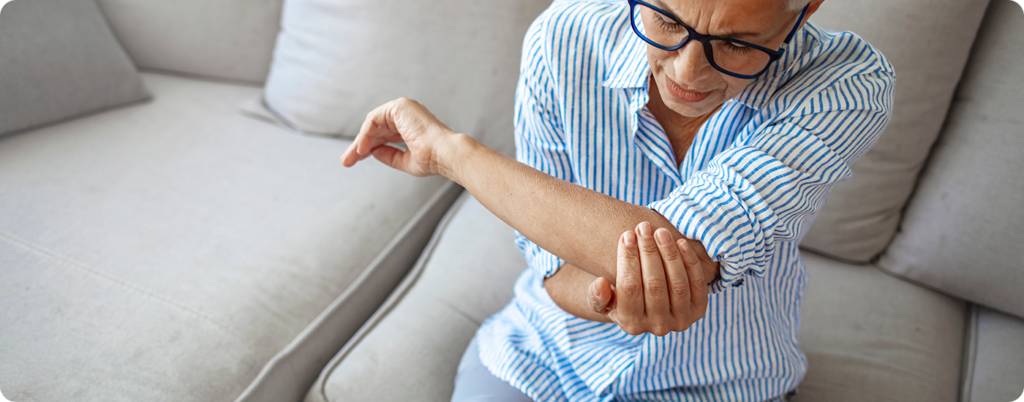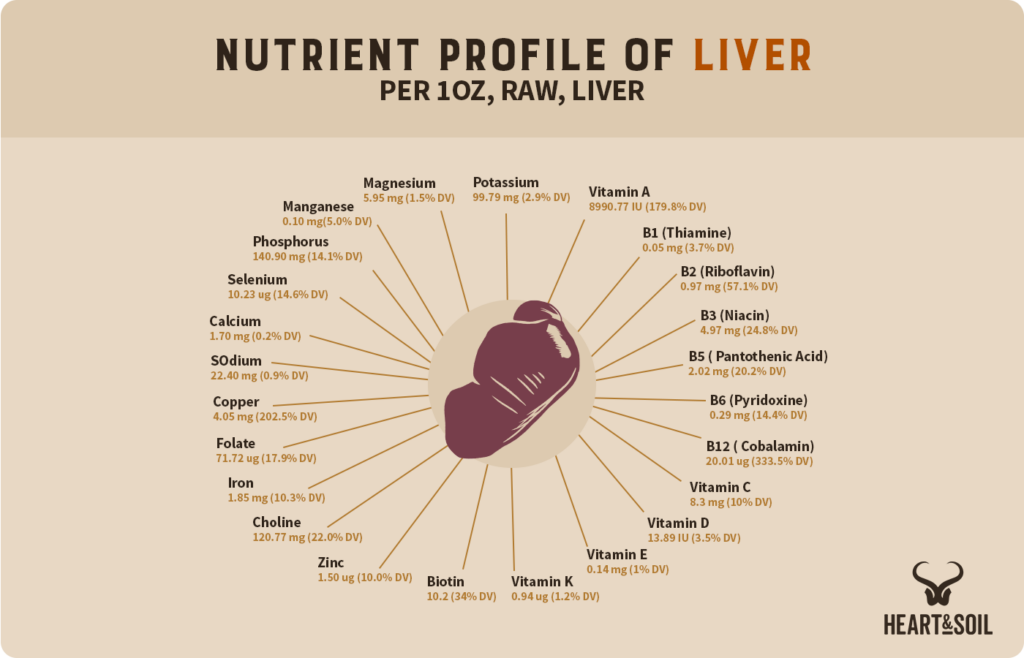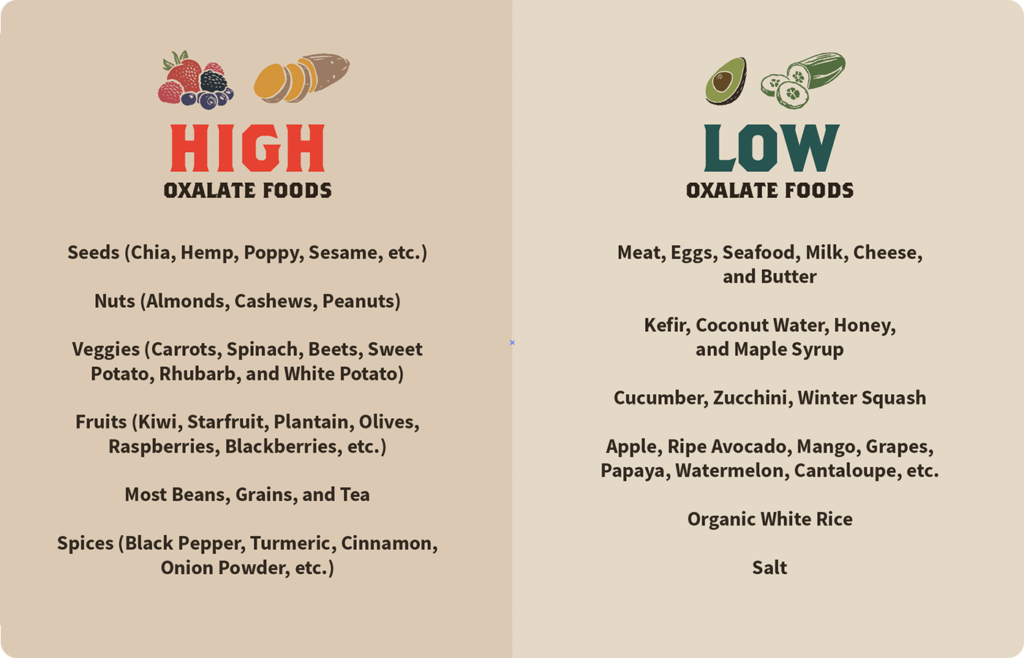PLEASE NOTE: The information in this blog is for educational purposes only. It is not a substitute for professional medical advice. Consult your healthcare provider if you’re seeking medical advice, diagnoses, or treatment.

Joint diseases and arthritis affect an estimated 350 million people worldwide and nearly 43 million in the United States (almost 20% of the US population)(1).
While it’s easy to write off these challenges due to aging, this may not be true for many individuals! Diet and lifestyle habits are often overlooked, impacting joint health and inflammation levels.
In this article, we’ll discuss the basics of joint health, the root causes of joint pain, along with diet and lifestyle choices you can make to improve your joint health dramatically (and naturally)!
Joint Health 101
A joint is where two or more bones meet to allow movement. Joints are held together by bands of connective tissue called ligaments. Cartilage prevents friction as bones move against one another. Joint pain is commonly felt in the knees, hips, shoulders, or neck.
A variety of joint-related diseases or challenges exist. There are over 100 forms of arthritis (such as osteoarthritis and gout) affecting men and women of all ages and races (2). Other forms of arthritis, such as ankylosing spondylitis, psoriatic arthritis, and rheumatoid arthritis, have an autoimmune component.
Arthritis is a major cause of disability in the United States. Almost 60 million US adults were estimated to have been told by a doctor (doctor-diagnosed) that they had some form of arthritis (3).
Joint pain, diseases, and associated challenges can be caused by factors such as…
- Infection (4)
- Inflammation and Injury (5)
- Overuse, Strains, or Sprains (6)
- The Western Diet (7)
- Lyme Disease (8)
- Gut Dysbiosis (9)
Inflammation is a word that gets tossed around frequently, and it’s generally in a negative light. Yet, inflammation is a critical part of your body’s defense mechanism. The immune system recognizes and removes harmful and foreign stimuli through this process and begins healing.
However, chronic (long-term) inflammation appears to play a developing role in chronic inflammatory diseases such as stroke, cancer, heart disorders, and diabetes (10). So, when dealing with joint pain or disease, it’s crucial to mitigate chronic inflammation.
In most cases, these challenges are treated with injections or medications. While these can certainly lead to improvements, they generally don’t get to the root of the issue and may have unpleasant side effects.
10 Diet and Lifestyle Tips for Better Joint Health
If you want to give your body the best shot at rebuilding healthy joint spaces, improving pain, and reducing inflammation, it’s essential to create an optimal healing environment where it matters most — on the inside! This can be done with consistent diet and lifestyle choices.
1. Adopt an Animal-Based Diet
The animal-based diet prioritizes well-raised animal foods like meat, organs, raw dairy, and eggs, along with low-toxicity carbohydrates.
Simply put, these are the most nourishing foods on the planet. You can get nearly every vitamin and mineral you need. Organs, in particular, contain growth factors and peptides that act as signaling molecules and support crucial systems throughout our body, helping to achieve optimal health. Take liver, for example; one ounce contains the following nutrients:

We also view animal-based as the ultimate anti-inflammatory diet! This is mainly due to removing processed foods like artificial sweeteners and seed oils.
In particular, we suggest avoiding seed oils which contain excessive amounts of linoleic acid.
Seed oils to look out for include corn, safflower, sunflower, soybean, cottonseed, canola, peanut, grapeseed, etc., all of which are found in processed foods and used, unfortunately, in many restaurants.
Excess omega-6 polyunsaturated fatty acids, like linoleic acid, contribute largely to metabolic dysfunction, weight gain, and chronic disease. They can also cause inflammation in the gut and other areas (11).
Look out for these oils under the “Ingredients” of food labels and avoid them at all costs! Instead, opt for butter, tallow, or ghee.
Additionally, do your best to avoid fatty pork (bacon), chicken, duck, turkey, or other monogastric animals primarily fed corn and soy diets. Like humans, these animals will store excess linoleic acid (omega-6 polyunsaturated fatty acid) in their adipose tissue (fat cells), which is easily absorbed by our bodies when consumed (12,13).
2. Reexamine Your Intake of “Healthy” Foods
Foods like spinach, almond butter, and turmeric are touted as miracle health foods.
The reality is that these (and other plant foods) contain various defense chemicals that can result in digestive upset, joint pain, and a triggered immune system.
If you’ve followed Heart & Soil or Paul Saladino, MD, you’ve likely seen that we suggest avoiding or limiting leaves, stems, nightshades, and seeds (nuts, grains, and legumes) if you’re experiencing unpleasant symptoms.
In particular, turmeric, spinach, and almond butter are high in oxalates. Oxalate is a compound found in many typical plant foods. If consumed in excess, it may cause various symptoms, including kidney stones, chronic fatigue, arrhythmias, insomnia, joint pain, nerve issues, problems with gut motility, and other digestive issues (14,15,16,17,18).
Additionally, high-oxalate foods are now available year-round for many people. Oxalates can also act as an “anti-nutrient,” robbing you of crucial minerals. So, consider avoiding or limiting “health foods” that may contribute to your joint pain!
Here’s a breakdown of high and low-oxalate foods (based on the PDF in the resources section).

One of the interesting and not-so-wonderful things about oxalate is that it can accumulate in various tissues throughout the body (19). Experts in the space have observed that the stored oxalate remains in the tissues until dietary oxalate intake reduces significantly. This explains the phenomenon known as “oxalate dumping,” where your body rids excess oxalates.
While oxalate dumping is ultimately a positive thing, it comes with unpleasant detox symptoms if oxalates are rapidly removed from the diet. This process is best monitored by a medical professional.
3. Include Foods That ACTUALLY Fight Joint Pain and Inflammation
While turmeric can help resolve symptoms of joint pain, turmeric does not address the root cause of inflammation. You’re also getting a dose of plant-defense chemicals like oxalates.
Skip the defense chemicals and opt for animal food sources instead. In particular, colostrum, cartilage, and bone marrow can support your joint health.
Cartilage and Bone Marrow
Bone marrow is one of the most accessible (and delicious) organs you can include. Grocery stores like Whole Foods often sell bone marrow in the freezer section, and you can find it at most farmers’ markets! Cartilage, on the other hand, is not so accessible.

Our Joint Strength & Repair product is a powerful blend of 90% bovine trachea and scapula cartilage and 10% bone marrow working together to improve joint health, function and ease discomfort.
Joint Strength & Repair features:
- Glycine supports collagen production and reduces joint inflammation (20, 21, 22).
- Glucosamine helps relieve joint pain and stiffness (23, 24).
- Peptides, growth factors, and stem cells support the formation of cartilage and bone cells (25, 26).
- Chondrocytes, glycosaminoglycans, and proteoglycans maintain cartilage’s strength, providing cushioning and support within joints. These elements also protect, hydrate, and lubricate soft tissues, aiding in repair and growth (27, 28, 29, 30).
Regular use encourages cartilage regeneration, expedites recovery from joint-related injuries, and fortifies connective tissues, ultimately enhancing overall mobility and durability.
Bovine Colostrum
Bovine colostrum is the first milk produced by cows, usually within 48 hours postpartum. Colostrum is rich in macro and micronutrients and immune, growth, and antimicrobial factors.
This “liquid gold” nurtures immunocompromised patients with GI diseases by fighting gut infection, enhancing gut repair, and strengthening the gut microbiome (31).
Its antimicrobial activity can inhibit the growth of yeasts, bacteria, and viruses (32). Colostrum contains the protein lactoferrin, which increases the proliferation of cells vital for bone formation (33). It can also help with achy joints, as Brandie experienced:

Some local farmers sell colostrum by special request; if not, consider adding Immunomilk to your routine (unless you’re a drug-tested athlete). Each serving of Immunomilk contains 3,000 mg of colostrum from grass-fed regeneratively raised cows.
4. Prioritize Sleep
Quality rest is one of the most straightforward (yet often overlooked) health improvement strategies. Joint pain can worsen sleep, and low-quality sleep can worsen joint pain. A vicious cycle indeed!

Consistent, restful sleep can dramatically improve energy levels, immune function, and overall well-being. Alternatively, stress and fatigue can cause or exacerbate inflammation (34).
We suggest you prioritize a consistent sleep routine of at least 7-8 hours per night. Helpful sleep tips include limiting artificial lighting before bed, monitoring caffeine intake, and winding down with reading or a long walk.
5. Improve Your Gut Health
The road to improved gut health looks different for everyone, but diet and lifestyle habits are crucial. This looks like including nutrient-dense foods, eliminating processed foods, reducing stress, exercising, and getting restful sleep.
Building off of the information above, the overconsumption of defense chemicals found in common plant foods can contribute to intestinal permeability (35,36,37). So, eliminating the most toxic plant foods can be crucial in healing your gut.
Many individuals with joint pain also benefit from eliminating gluten, lectins, artificial sweeteners, and emulsifiers (such as guar gum). Each of these can damage your gut! Avoid (or limit) alcohol and tobacco products as these can worsen autoimmune conditions and gut health (38).
Another factor to consider is using antacids, antibiotics, and NSAIDs (such as aspirin and ibuprofen). These can contribute to the development of a leaky gut, resulting in body-wide inflammation from exposure to toxins (39).
6. Manage Stress
Stress and fatigue can cause or exacerbate inflammation (40). While some stress is normal, excess stress contributes to autoimmune conditions like rheumatoid arthritis (41).

Engage in activities promoting relaxation, such as hobbies, massage therapy, spending time with loved ones, reading, or meditation.
7. Get Moving
Exercise and incorporate daily movement, but avoid overtraining, as excessive exercise can elevate cortisol levels (42). Excessive exercise can contribute to joint pain as well.
The minimum suggestion we give is two or three 15-minute walks pre/post-meals, as this can contribute to healthy blood glucose control (43). Exercise can also help control body weight and strengthen bones and muscles (44). Bonus points for adding in some weights for strength training!
Incorporate recovery strategies such as walking, rest days, and sauna or cold plunge usage.
8. Spend Time in the Sun

Go outside, play in the sun, and enjoy nature while you’re at it! Daily sun exposure can also stimulate your natural circadian rhythm, promoting sleep (45), recovery, and muscle growth. It may even improve gut health (46)!
9. Practice Cold Exposure
Cold therapy provides many benefits to help strengthen the immune system and improve vascular health. It also aids in fat burning by shifting white adipose (fat) tissue to brown, more metabolically active adipose tissue (47, 48).
Start by spending one minute in a cold shower at least three times a week and work up to five minutes. Or, if you have access to a cold plunge, you can follow this protocol (49).
10. Get in the Sauna
Heat exposure enhances detoxification pathways, up-regulates glutathione production, increases heat shock proteins, and enhances mitochondrial adaptation. It’s also known to be cardioprotective.
It can also dramatically improve the immune system and vascular health (50, 51, 52, 53). The magic for vascular health comes with the expansion of blood vessels, production of growth factors, and delivery of nutrients within the micro capillaries (tiny blood vessels) that feed essential tissue.
5 Resources to Learn More About Joint Health
1. Society of Metabolic Health Practitioners
Use this site to find physicians from all around the globe who understand the immense value of making animal foods the center of the diet.
2. The Institute for Functional Medicine’s Find a Practitioner Tool
IFM’s Find A Practitioner tool is the largest referral network in functional medicine, created to help patients locate functional medicine practitioners anywhere in the world. These practitioners are trained at uncovering root causes such as Lyme disease, mold toxicity, or heavy metal exposure.
3. Podcast Video: Could Oxalate Overload Be Causing Your Symptoms? With Sally K Norton (95 minutes, YouTube)
Paul Saladino, MD, and Sally K Norton discuss how oxalate intake may contribute to challenges like impaired brain function and muscle and joint pain.
4. PDF: Beginner’s Guide to Undoing Oxalate Overload from Sally K Norton
Sally K Norton is a Cornell University-educated nutritionist, dietary consultant, and lifestyle coach. She is an expert on low-oxalate eating as a tool to improve a myriad of health challenges.
5. Article: Simple Tips to Improve Autoimmune Disease (Naturally)
This article from the Heart & Soil blog outlines dozens of diet and lifestyle suggestions for autoimmune diseases such as rheumatoid arthritis.
Break Free from Joint Pain and Improve Your Joint Health Today
Like so many challenges, poor joint health doesn’t have to be a guarantee with aging. Even if your joint health is not where you want it to be, you can take plenty of steps to see improvement.
This might look like dialing in your diet, identifying root causes, improving your gut health, prioritizing sleep, or strategically supplementing.
The nutrients found in various animal foods (like colostrum, cartilage, and bone marrow) can also work wonders for your joints. Yet, these foods are often ignored or discarded.
Our newest supplement, Joint Strength & Repair, blends bone marrow and cartilage to help you improve joint health. It contains glycine to support collagen production and glucosamine to relieve joint stiffness.
Hopefully, this article arms you with the tools to leave joint pain in the rearview mirror!
Subscribe to future articles like this: